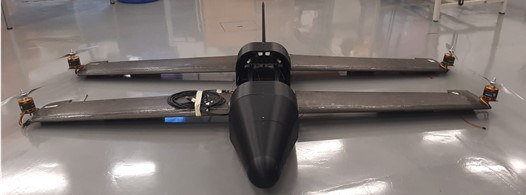Ultra-wideband microwave radiation can be used for damage detection and damage localization on the surface of metallic structures. An article describing the methodology has been published in the International Journal of Microwave and Wireless Technologies.
Abstract:
Electromagnetic waves in the microwave and millimeter-wave frequency range are used in nondestructive testing and structural health monitoring applications to detect material defects such as delaminations, cracks, or inclusions. This work presents a sensing concept based on guided electromagnetic waves (GEW), in which the waveguide forms a union with the structure to be inspected. Exploiting ultra-wideband signals a surface defect in the area under the waveguide can be detected and accurately localized. This paper presents numerical and experimental GEW results for a straight waveguide focusing on the detection of through holes and cracks with different orientation. It was found that the numerical model qualitatively replicates the experimental S-parameter measurements for holes of different diameters. A parametric numerical study indicates that the crack parameters such as its orientation and width has a significant influence on the interaction of the incident wave with the structural defect. On top, a numerical study is performed for complex-shaped rectangular waveguides including several waveguide bends. Besides a successful damage detection, the damage position can also be precisely determined with a maximum localization error of less than 3%.
More information:
Moll, J., Guided Electromagnetic Waves for Damage Detection and Localization in Metallic Plates: Numerical and Experimental Results, International Journal of Microwave and Wireless Technologies, 2020 (in press, accepted in February 2020)


